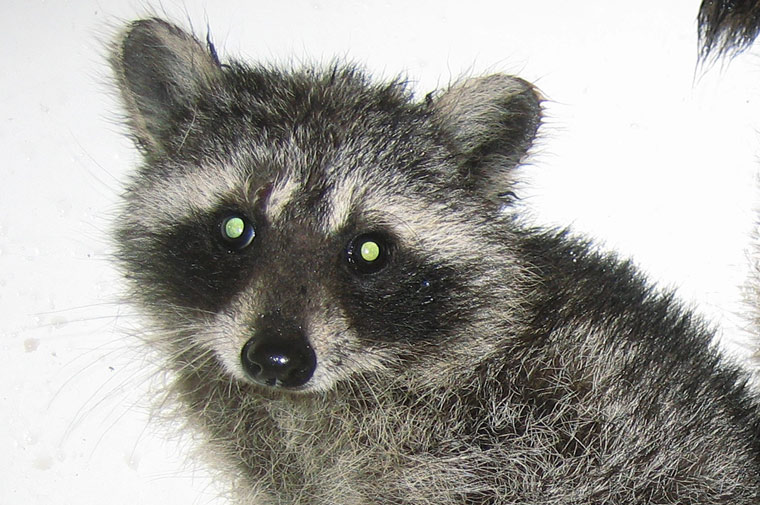- info@wildlife-removal.com
Call us for help in your town
Wildlife Removal Education
Raccoons in the Chimney: How to Get Them Out
Need raccoon removal in your hometown? We service over 500 USA locations! Click here to hire us in your town and check prices - updated for year 2020.
Does your chimney have a chimney cap? If it doesn't, you may wish to consider investing in one, because chimneys are actually prime locations for animal intruders, and sometimes, they can get stuck down there too.

Your roof is no different to being at the top of a tree to a raccoon, and the little holes and cracks that allow them to get inside the attic? Well, they're no different to a tree hollow or damp cave. A chimney without a cap looks like the perfect spot to a passing wild critter who is just looking for a warm and cozy spot to hang out and sleep for a while. That's why so many homeowners encounter chimney-animal problems.
Female raccoons, alongside a string of other wild critters, will specifically look for den or nesting spots (or potential ones) that are higher up, which is why they are frequently drawn to attics and chimneys. Tree squirrels are similar and are, again, another culprit as far as chimney-animal problems go. In some cases, the animal can get in and out without any concerns. When this is the case, the chimney can easily be sealed once the critter has left. Raccoons are usually nocturnal animals, although can be seen out during the day, but tend to be more active during the night, heading out to find food. You can seize your moment, wait for them to leave, and then perform your sealing job. When the animals come back, they will be left unable to get back in and have no choice but to find somewhere else to live. They will more than likely return to an old den site close by. Raccoons are known to have more than a few, will share the details of these to other raccoons, particularly offspring, and will return to the same den sites year after year if they are still available.
If you have a female raccoon in the chimney, there is a chance that she has built a nest in there. If the raccoon kits are young, they will not be able to leave the chimney, so sealing a mother out at night is not going to be the best approach, unless you know where the nest is and can get access to it. You could also grab the kits and use them as bait in a much larger trap, with the intention of trapping and then releasing the entire family as a whole unit.
If the animal is stuck, a smooth flue from preventing an easy escape, you may need to intervene. In some cases, some material dangled down from the top of the chimney to the bottom will do the trick. The smooth surface of the inside of the chimney is what prevents the animal from escaping - they have nothing to grip their claws on to give them leverage to climb up and out. If you were to dangle some rope or material down there, securing it at the top, there is a chance that the raccoon will rescue itself. The mother may also make several trips up and down to move her kits to another den spot.
If this doesn't work, a snare pole can come in handy, although these are actually quite dangerous in the wrong hands and we recommend that they are used only by experienced snare pole handlers. Incorrectly used, these “humane” devices can kill, asphyxiating the animal or cutting into its flesh, causing infections, blood loss, and more.
You definitely shouldn't light a fire if you have a raccoon in the chimney. If the animal is stuck or has babies, it won't be able to get out in time and will be cooked alive. Also: it will smell horrendously throughout your home.
If you can open the fire at the bottom, allowing the animals into your home, you can try to create a pathway that leads them right to an open door, but wild animals, especially raccoons, are unpredictable. You must also remember that a stuck or injured animal will likely be defensive and aggressive and may lash out at you, rather than searching for a way out.
When all else fails, or this just seems like too complicated a job for you, we recommend getting in touch with a local wildlife rehabilitator. They will be able to give you a quote over the phone, a same-day appointment in emergency situations, and, in some cases, may not even need to be called out at all. With a few helpful pieces of advice, this might just be a problem that you can fully solve on your own.
Go back to the Raccoon Removal page, or learn tips to do it yourself with my How to Get Rid of Raccoons guide.


















